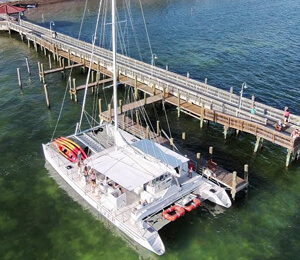The story of colorful Key West begins in 1513 when Spanish explorer Ponce de Leon, looking for his storied Fountain of Youth, first discovered Casa Hueso, or the Isle of Bones, as the island was then known. The island, strewn with bones and remains battles and burial grounds of the ancient Calusa Indians, became known as Key West, soon after its discovery. Full-time residents first occupied Key West in 1822. A naval outpost was added in order to purge the area of the nuisance pirate population. In 1828, Key West was named the county seat of Monroe County, Florida.
Key West first flourished as a fishing community, and also from retrieving the remains of nearby shipwrecks that littered the reefs. Later, Cuban refugees supplemented the Key West economy with their production of cigars with tobacco imported directly from Cuba, However the turn of the 20th century saw a decline in city growth and population, thanks to World War I and World War II.
Key West had always maintained its relationship with the Navy, and following World War II, that helped the city to become populated and prosperous once again. However, the early 1960s saw staff reductions and the closings of military bases nationwide, and Key West was once again thrown into a decline.
Key West has managed to bounce back again somewhat, thanks to its booming tourism industry, and the open-minded attitude of its residents. There are approximately 25,000 residents of Key West today. Key West is a charming mixture of colorful Bahamian architecture and colonial influence, with many buildings in the city still in use after well over a century.
Key West enjoys the notoriety of being a colorful, exuberant, and tolerant community, and attracts visitors and residents of all ages and backgrounds. It is truly the little city that could, having endured times of triumph and failure, and rising again and again after devastating tropical storms.

